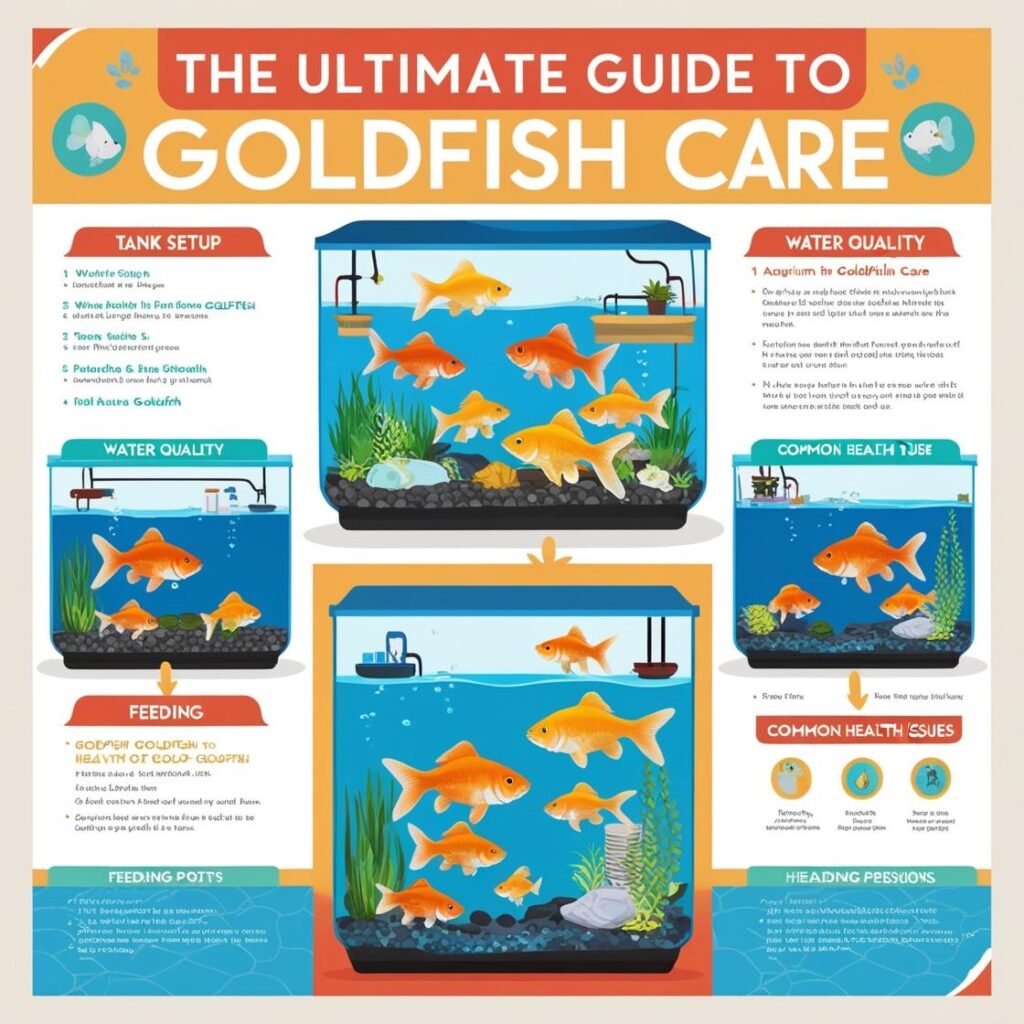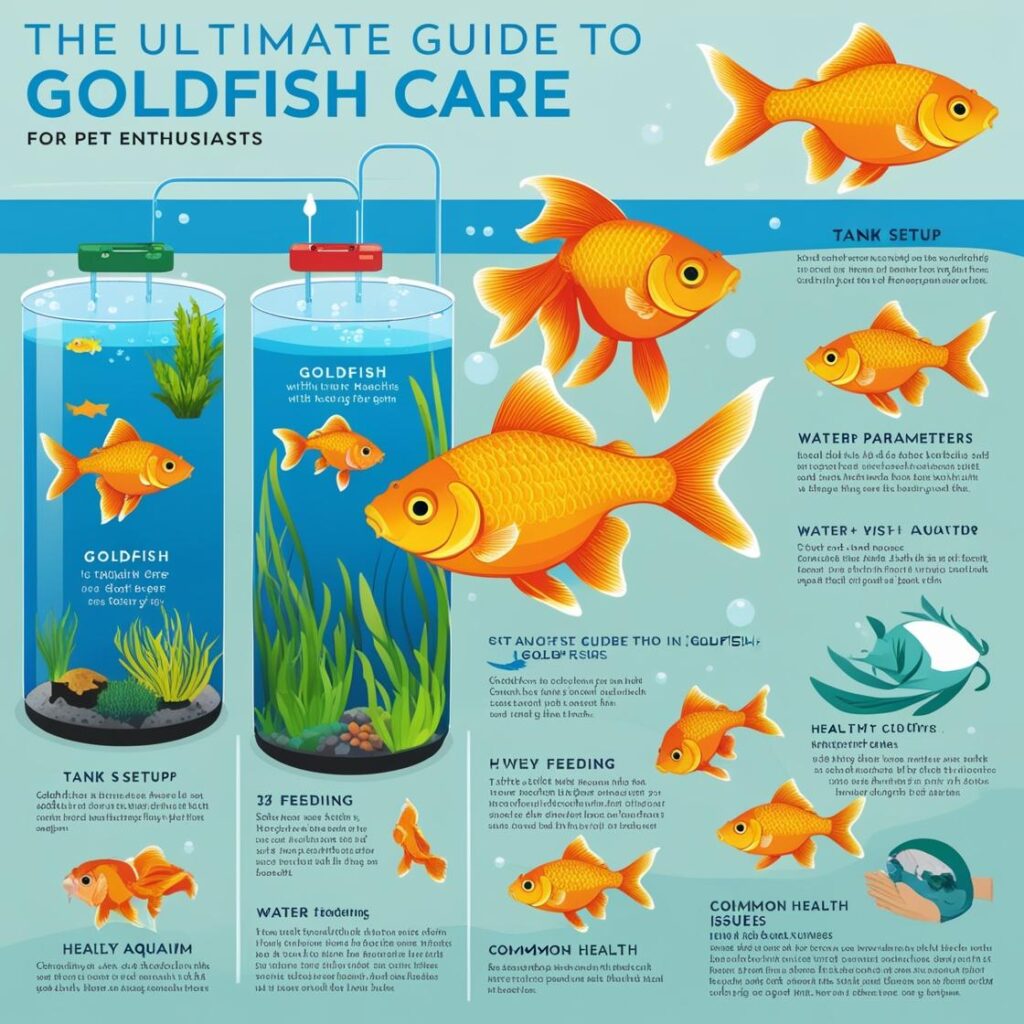Goldfish are among the most enduringly popular pets across the globe. Their vibrant colors, graceful movements, and relatively easy maintenance make them a beloved choice for both novice and seasoned aquarists. However, the misconception that goldfish are the ideal low-maintenance pet often leads to neglect, resulting in unhealthy fish and unhappy owners. This blog post aims to provide a thorough understanding of how to properly care for a goldfish, ensuring a long and healthy life for your aquatic companion.

Understanding Goldfish
Before diving into care specifics, it’s essential to grasp the nature of goldfish. They are social creatures and can grow quite large—some varieties can reach lengths of over a foot! Understanding their biology, needs, and behaviors is crucial for successful care. Goldfish thrive in a properly maintained environment, and with the right knowledge, they can live for over 20 years, with some reaching ages of 30 years or more!
Choosing the Right Goldfish
Goldfish come in various shapes, sizes, and colors, classified mainly into three categories: single-tailed, fancy, and telescope. When selecting a goldfish, consider the following:
- Single-tailed varieties (e.g., Comet, Shubunkin) are more active swimmers and require larger tanks.
- Fancy varieties (e.g., Orandas, Ranchus) have a more delicate structure and may need more specific environmental conditions.
- Telescope goldfish have uniquely protruding eyes, which can make them susceptible to certain eye diseases and tank mates should be chosen judiciously.
Always choose healthy specimens. Look for clear eyes, a vibrant color without fading or discoloration, and active swimming behavior.
Setting Up the Ideal Environment
Tank Size and Structure
Contrary to common belief, goldfish need significantly more space than a small bowl. A 20-gallon aquarium is the minimum size recommended for a couple of small goldfish, with an additional 10 gallons for each additional fish. Goldfish produce a substantial amount of waste, necessitating a larger tank size to foster a stable environment.
Key features of a goldfish tank include:
- Filtration: A strong filtration system is crucial as it helps maintain water quality by removing harmful toxins. Opt for a filter rated for double the tank size for adequate waste management.
- Aeration: Goldfish require well-oxygenated water. An air pump and air stones can help keep the oxygen levels optimal, particularly in densely stocked aquariums.
- Aquascaping: Substrate should be smooth rather than sharp, as goldfish often forage near the bottom. Live plants can be beneficial for maintaining water quality, but be mindful that some goldfish may uproot or consume delicate plants.
- Hiding Spots: Incorporate ornaments or caves to provide security. This is particularly important for fancy goldfish, which can be shy.
Water Parameters
Goldfish are sensitive to their environment, so maintaining proper water conditions is vital:
- Temperature: Goldfish thrive in cooler temperatures (68°F to 74°F or 20°C to 23°C). Avoid exposure to sudden temperature changes.
- pH Level: Aim for a pH between 6.5 and 7.5 to keep your fish comfortable.
- Ammonia and Nitrite Levels: Both should remain at 0 ppm. Regular water testing is critical.
- Nitrate Levels: Nitrates should be kept below 40 ppm. Regular water changes help in managing this.
Conduct weekly or bi-weekly partial water changes (15-25%) to maintain quality, removing debris and reducing toxin levels.
Feeding Your Goldfish
A balanced diet is key to the health of your goldfish. While they are often seen as bottom-feeders, they are omnivores that require a varied diet. Consider:
- High-quality pellets: Look for sinking pellets specifically designed for goldfish, as these are formulated to meet their nutritional needs.
- Fresh vegetables: Offer blanched peas (shelled), spinach, and cucumber as occasional treats.
- Flakes and freeze-dried foods: While these can be part of their diet, ensure they are high quality to prevent digestive issues.
- Avoid overfeeding: Goldfish have a tendency to overeat. As a rule of thumb, feed only what they can consume within 2-3 minutes, once or twice a day.
Treating Special Dietary Needs
If you notice signs of buoyancy issues or digestive problems, consider incorporating a special diet or medicated foods. Goldfish can be prone to swim bladder disease, usually linked to overfeeding or inappropriate food types.
Regular Maintenance and Health Monitoring
Keeping your goldfish healthy requires regular maintenance and monitoring.
Routine Maintenance
- Weekly Testing: Test the water parameters once a week to catch any imbalances early.
- Tank Cleaning: Clean the tank and substrate periodically, but avoid over-cleaning as beneficial bacteria can be removed.
- Filter Maintenance: Clean your filter as per the manufacturer’s instructions but never rinse it under tap water, as chlorine can kill beneficial bacteria.
Health Monitoring
Be vigilant for signs of illness. Look for the following:
- Behavioral Changes: Lethargy, lack of appetite, or abnormal swimming patterns may indicate stress or illness.
- Physical Signs: Watch for white spots (ich), color fading, frayed fins, or unusual growths.
If you observe any concerning signs, consult an aquatic veterinarian promptly.
Socialization and Companionship
Goldfish are social creatures that thrive in groups, but care must be taken when selecting tank mates. Avoid aggressive or fin-nipping species. Suitable companions include other goldfish or certain peaceful freshwater species, but ensure all fish are compatible in size and temperament.
Conclusion
Caring for a goldfish offers a rewarding experience filled with the joys of aquatic life. By providing the right environment, maintaining water quality, adapting their diet, and monitoring their health, you can promote the long-term well-being of your pet goldfish. It is crucial to remember that these beautiful creatures are not just decorative pets but living beings that require thoughtful care and attention.
With dedication and proper knowledge, your goldfish can flourish and bring vibrancy to your home for many years to come. Embrace the rewards of responsible pet ownership and enjoy the serene beauty your goldfish brings to your life!
